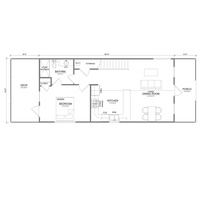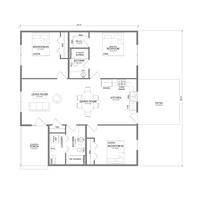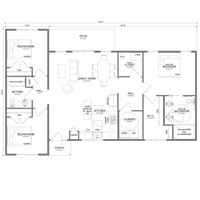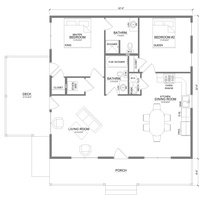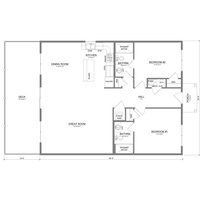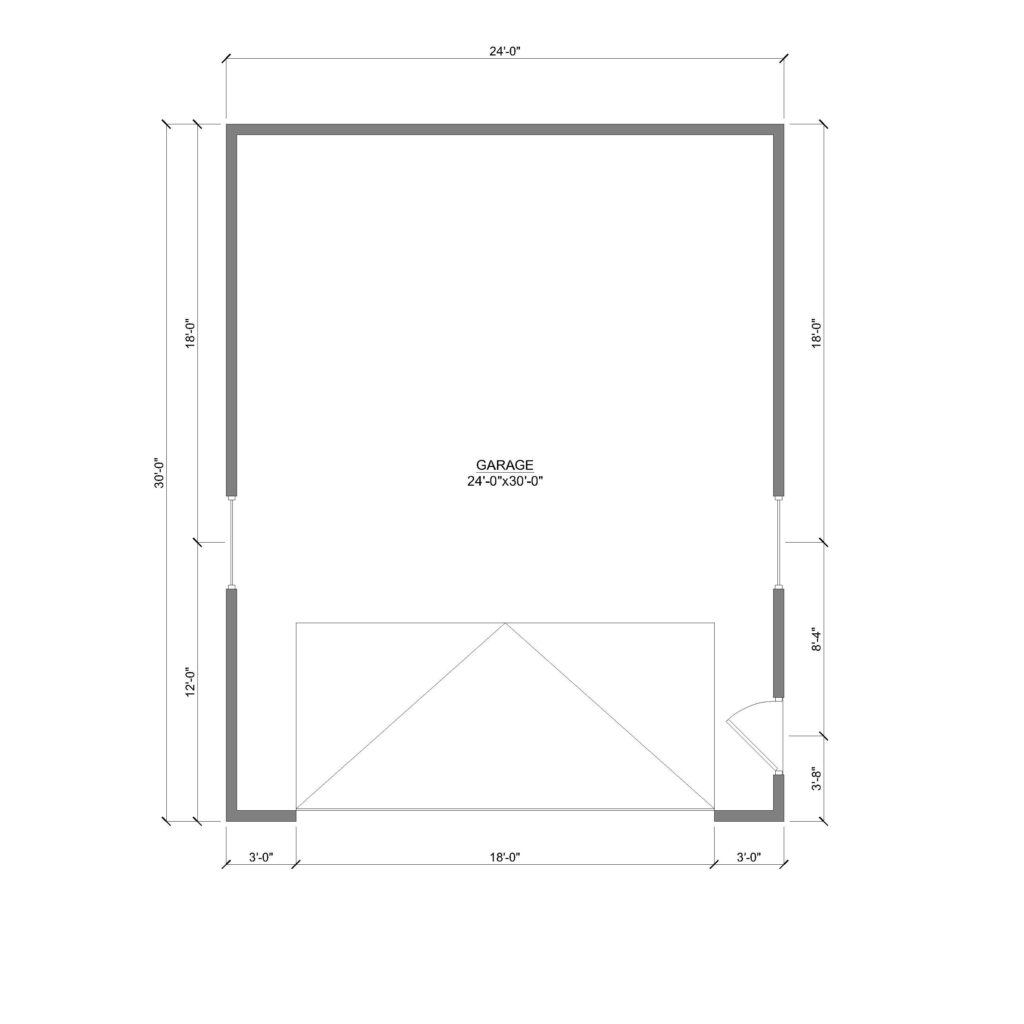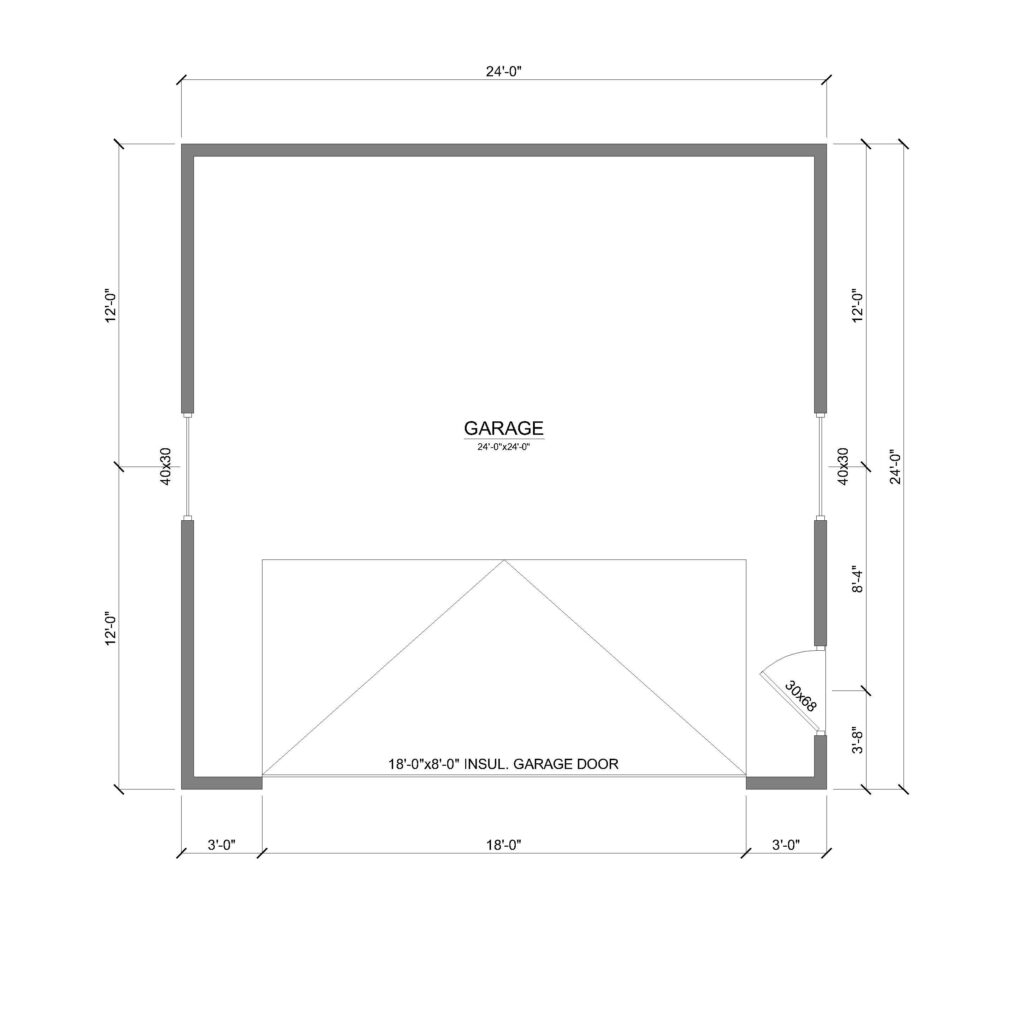We don’t offer a “price guarantee” because
we believe in giving you the real picture.
Everyone wants to know what it costs to build their home, all-in. We can come close, but that’s about it.
We don’t offer price guarantees. We offer reasonable estimates, because every single house is different. Sure, we can pre-build and pre-cut all the lumber and steel in our factory, but that’s only half the battle. The real challenges happen when we start dealing with variables. What variables you ask? Alright, let’s talk about them…
The biggest one: Land cost
We have no idea what kind of land you’re going to be building on, or how much land you intend to buy. Buying 20 acres to ride around your dirt bikes on is different than buying 0.5 acres from your cousin Teddy to save costs.
We hope this doesn’t come as news to you, but if you decide to buy $400,000 in land, that’s going to make your mortgage payment higher than buying a $20,000 piece of land.
More about land.
Building on flat land versus a steep slope can have a big impact on your overall cost. Sloped land may require extensive grading or retaining walls to create a level building surface, and these adjustments can quickly add to your expenses.
If you need to remove a ton of trees, that’s going to cost more. Perhaps you need an engineer to come take a look at how water flows across your property, just to make sure we’re not creating foundation issues later.
Then there’s just the soil itself. Different soil conditions can change what it costs to pour your concrete foundation.
Utilities in rural versus urban areas
When building in a city or suburban area, connecting to city utilities is usually the more affordable option up front. The cost of hooking up to city water and sewer typically ranges between $1,500 and $5,000, and the installation process is straightforward. Once connected, you’ll have predictable monthly bills for water usage and sewage, and there’s very little ongoing maintenance required. Overall, city utilities offer convenience and lower initial costs, making them an easy option if they’re available in your area.
On the other hand, if you’re building in a rural area, you’ll likely need to install a well and septic system. These systems can cost between $10,000 and $25,000 combined, depending on the depth of the well and the type of septic system required. While you won’t have monthly utility bills, you will need to budget for occasional maintenance, such as pumping the septic tank and replacing the well pump every so often. Though the upfront costs are higher, wells and septic have lower ongoing costs.
Materials and components.
The materials you choose for your home can make a huge difference in the overall cost. High-end materials, such as custom tile, hardwood floors, or granite countertops, will significantly increase costs compared to standard, builder-grade options.
We include builder grade materials in our base prices, but items such as custom tile work, exotic wood cabinet upgrades, built-ins, and other upgrades will increase the cost of your home.
Inclement Weather & Delays
Weather can also play a role. If you’re building in an area prone to heavy rain, snow, or extreme temperatures, this could lead to delays and added costs for protection and work interruptions.
We’ll let you know when our patented Weather Control Machine 5000 is finally built. Until then, we can’t control the weather.
Home upgrades.
The base price of the home includes all the essentials, but you might want to upgrade certain features. For example, a tankless water heater is more expensive upfront than a traditional tank-style heater but can save money in the long run. Similarly, you can choose builder-grade appliances or splurge on higher-end options depending on your budget and preferences.
Logistics and Rental Costs
Logistics are another key consideration. Our factory is in Branson, Missouri. The closer you are to Branson, the less it costs to get our home shipped to you. (It all arrives on a single semi-truck.)
Then there are local logistics costs; For example, pouring a foundation might seem like a standard expense, but the cost of concrete varies by region. The farther your home is from the nearest concrete plant, the more expensive it will be to transport the concrete to pour your slab foundation.
You’ll need to rent a boom truck, and while boom truck rentals are usually close in price, market to market, the rental cost still depends on local supply and rates.
Labor costs. Your market may vary.
Construction labor rates also fluctuate depending on where you are building. Some areas have higher labor costs due to demand, while other markets might offer more competitive pricing. That’s why labor isn’t a fixed cost, and it’s something to consider when budgeting.
When you tell us where you’re going to buy land, we’ll help connect you with our trusted contractor network to get quotes on labor.
In some markets, we have pre-existing agreement with general contractors, so ask our team members about working with a preferred contractor.
HVAC… not included?
When we say every home is different, we mean it. If you’re building in South Texas, you probably can’t image a world without air conditioning — but about 55% of homes in the California Bay Area don’t have it. Heck, some houses in Southern California don’t have heat or air conditioning. If you’re planning on building in Montana, you may skip air conditioning and only install heat.
Secondly… heating options vary. You may want natural gas from a local utility, or the rustic charm and rugged durability of a wood burning stove.
Since every air conditioning and heating setup is different, it’s not included in our base price.
Add-ons and Customization
Adding features like solar panels, a detached garage, or custom landscaping will increase the total cost of your home. We believe in giving you control over these choices so that you can prioritize what matters most to you, and we’ll be transparent about how each upgrade affects your final price.
Our commitment to transparency and managing expectations.
At the end of the day, building a home is an investment, and we’re committed to helping you navigate the costs clearly and openly. Our goal is to give you a fair and accurate estimate without any surprises, so you can focus on creating the home of your dreams.
